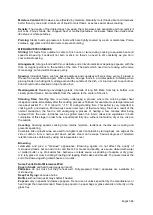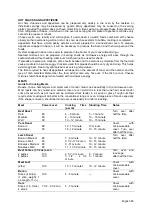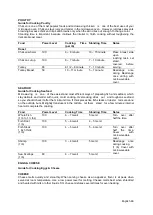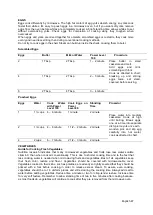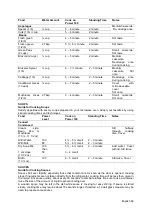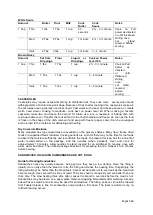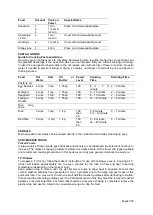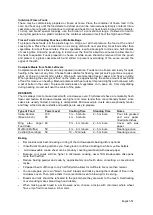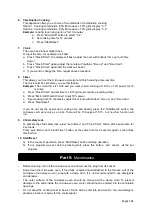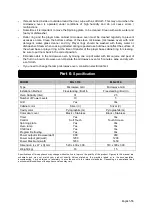
English 43
3. Press
START/+30SEC
button. To confirm setting.
4. When the time on the alarm has expired, the clock indicator will go
out and the buzzer will ring 5 times.
INQUIRY FUNCTION
1. Press
“POWER”
button
during cooking; the display will show
current power level for 3 seconds.
2. Push
CLOCK
button
during cooking; the display will show
current power level for 3 seconds.
COOKING GUIDE
THE PRINCIPLES OF MICROWAVE COOKING
Microwaves are a form of high frequency radio waves similar to those used by a radio including AM,
FM and CB.
Electricity is converted into microwave energy by the magnetron tube. From the magnetron tube,
microwave energy is transmitted to the oven where it is reflected, transmitted and absorbed by the
food.
Reflection Microwaves are reflected by metal just as a ball is bounced off of a wall. For this reason,
metal utensils are not suitable for use in the microwave. A combination of stationary interior walls and
a rotating metal turntable or stirrer fan helps assure that the microwaves are well distributed within the
oven cavity to produce even cooking.
Transmission
Microwaves pass through some materials such as paper, glass and plastic much like sunlight shining
through a window. Because these substances do not absorb or reflect the microwave energy, they are
ideal materials for microwave oven cooking containers.
Absorption
During cooking, microwaves will be absorbed by food. They penetrate to a depth of about 3/4 to 1 1/2
inches.
Microwave energy activates the molecules in the food (especially water, fat and sugar), and heat is
produced. If you vigorously rub your hands together, you will feel heat produced by friction. The
internal cooking of larger foods is done by conduction as the heat which is produced by friction is
conducted to the middle of the food. Foods also continue to cook by conduction during standing time.
FOOD CHARACTERISTICS
Quantity:
The amount of food placed in a microwave oven has a direct effect on the cooking time.
Small amounts of food or liquid require less cooking time than larger amounts of the same substance.
As quantity increases, concentration decreases.
Size:
Small pieces cook faster than large ones. To speed cooking, cut pieces smaller than two inches
(5 cm), so microwaves can penetrate to the middle from all sides. Pieces which are similar in size and
shape cook more evenly.
Shape:
Many foods are uneven, like a chicken, ribs or broccoli. The thin parts will cook faster than the
thick parts, while uniformly thick foods cook evenly. To compensate for irregular shapes, place thin
pieces toward the center of the dish and thicker pieces toward the edge of the dish.
Starting Temperature:
Frozen or refrigerated foods take longer to cook than foods at room
temperature.
Bone and Fat
: Because bones conduct heat, the side of the meat the bone is on will cook first, while
boneless cuts cook slower but more evenly. Fat attracts microwaves. The middle of these foods are
cooked by heat conduction.
















